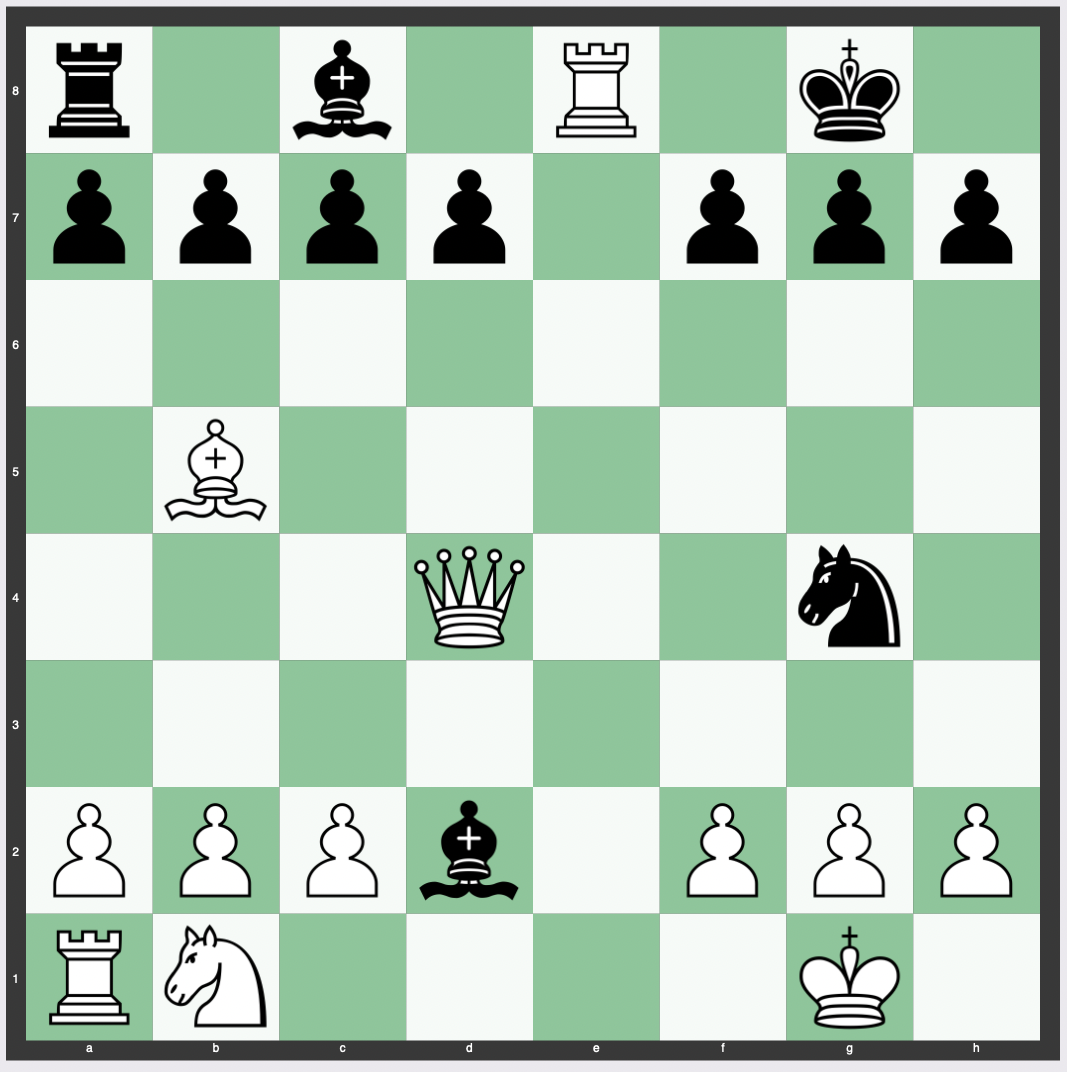One of the most thrilling and decisive patterns in chess is the back-rank checkmate.
This checkmate pattern, while simple in its essence, can be a powerful weapon in the arsenal of both beginners and seasoned players.
Below we’ll look deep into the back-rank checkmate, offering insights and strategies to master this technique.
Understanding the Basics
What is a Back-Rank Checkmate?
The back-rank checkmate occurs when a king is trapped on its own back rank (the 1st rank for White and the 8th rank for Black) and is checkmated by an enemy rook or queen.
The king’s escape routes are typically blocked by its own pieces, making it a victim of its own army’s structure.
Why is it so effective?
The effectiveness of the back-rank checkmate lies in its simplicity.
Often, players are so engrossed in the middle-game tactics and strategies that they overlook the safety of their king.
This oversight can lead to a sudden and unexpected checkmate, catching even experienced players off guard.
Recognizing the Opportunities
Key Indicators
- The King’s Position: If the opponent’s king is on its back rank, or has returned there, it’s a potential target.
- Blocked Escape Routes: Look for pawns or other pieces blocking the king’s forward movement.
- Lack of Luft: “Luft” is a German word meaning “air.” In chess, it refers to a safety square for the king. If there’s no luft, the king is more vulnerable.
Common Scenarios
- Castled King: Players who castle often expose their king to back-rank threats, given there’s commonly three pawns in front of the king.
- Endgame Vulnerability: In the middlegame, when the board is still relatively full, the king is often on the back rank for safety purposes, making it susceptible to back-rank mate.
Diverting Defenders
If your opponent has pieces defending the back rank, try diverting them.
Tactics like pins, forks, and skewers can force these defenders to move, leaving the king exposed.
Defending Against the Back-Rank Checkmate
Awareness is the first line of defense. Always be vigilant about the safety of your king.
Here are some strategies:
- Create Luft: Move a pawn in front of the king to give it an escape square.
- Centralize Your Rooks: Rooks on the central files can swing over to defend the back rank if needed.
- Avoid Overloading Pieces: Ensure that your pieces aren’t tasked with too many defensive duties, as this can lead to vulnerabilities.
Example
Below is an example of back-rank mate:

The black king has castled and has 3 pawns in front of it.
It hasn’t moved a pawn forward to provide an air pocket.
No other piece on the back-rank can capture the rook. Black’s rook is trapped in by its own bishop.
The knight and bishop in play can’t retreat to block the mate or capture the rook.
Blundering Back-Rank Mate
Back-rank mate is one of the most common forms of blundering checkmate.
Take the following example.
Let’s say white doesn’t play a1 and instead attacks the queen with c1:

Given the battery that black has formed, this attack is misplaced and the queen can simply take the rook.

The white queen is then forced to take to black queen.

Which is then recaptured for a back-rank checkmate due to the lack of luft (German for “air”) for the white king:

Conclusion
The back-rank checkmate, while straightforward, is a testament to the depth and beauty of chess.
By understanding its mechanics and being alert to its threats, players can not only harness its power but also defend against it effectively.
As with all things in chess, practice and experience are key.
Related
- Queen and King Checkmate
- Knight and Bishop Checkmate
- Knight and Pawn Checkmate
- Rook and King Checkmate
- Bishop and King vs. King
- Two Knights Checkmate
- Bishop and Pawn Checkmate
- Knight and Bishop Checkmate
- Queen and Bishop Checkmate
- Rook and Bishop Checkmate
- Queen vs. Rook Endgame
- 2-Move Checkmate
- 3-Move Checkmate
- 4-Move Checkmate
- 5-Move Checkmate


